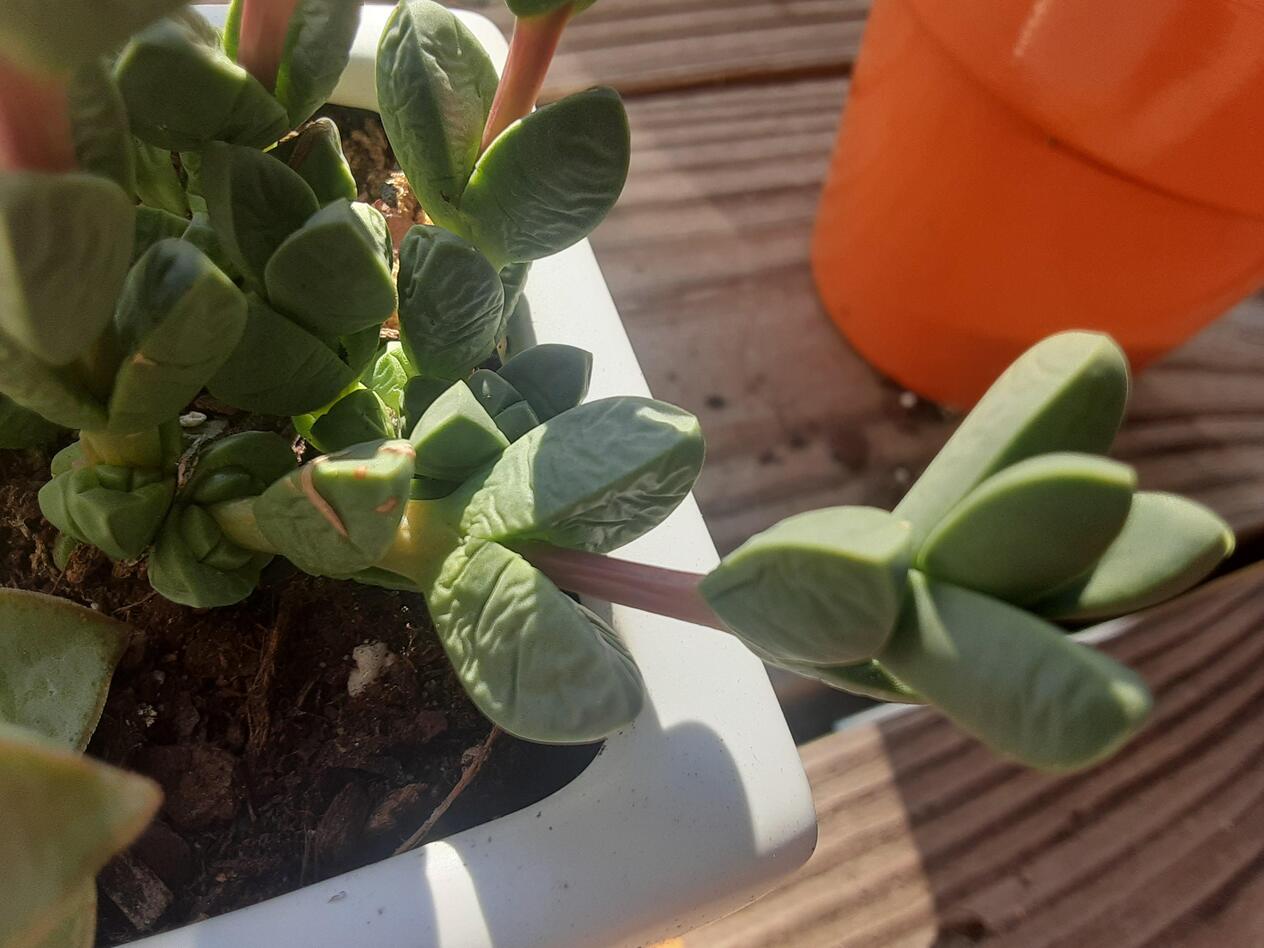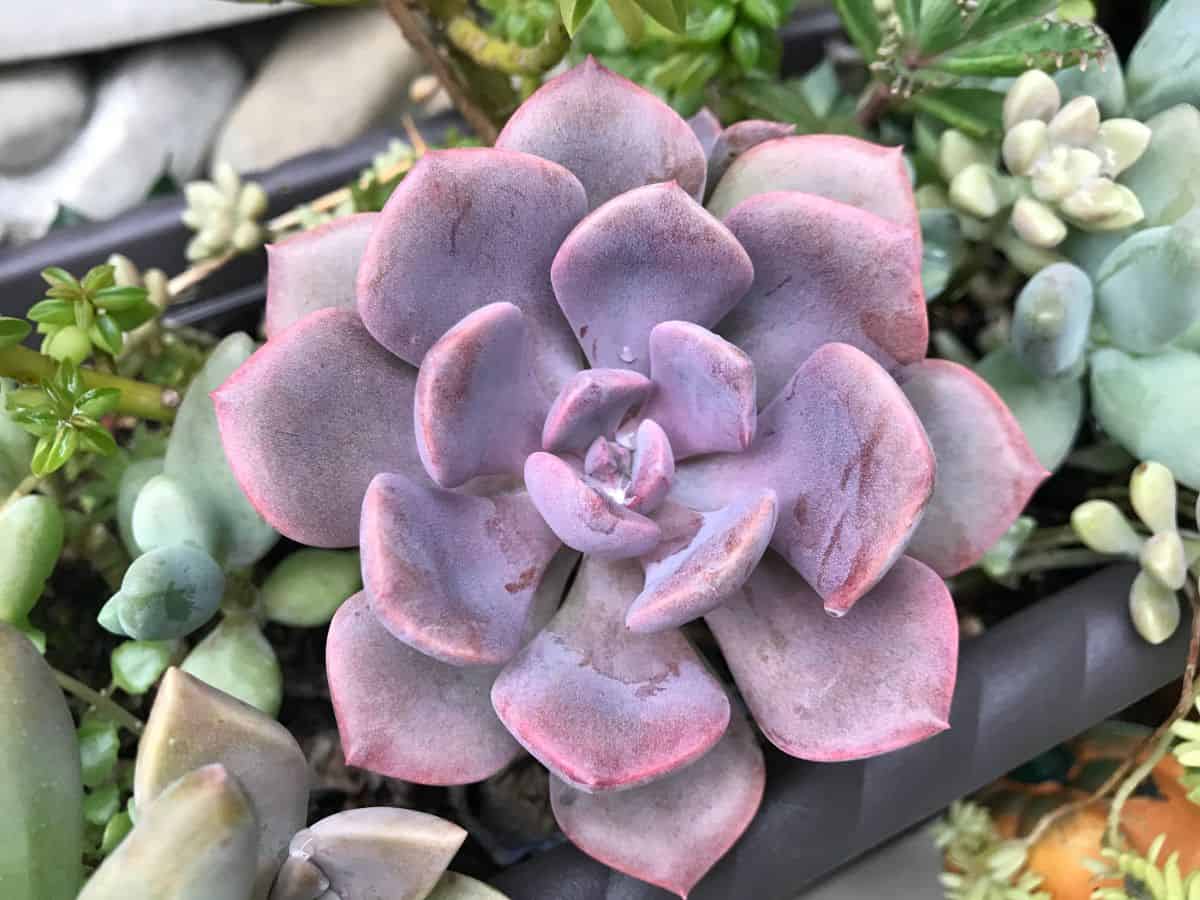Home>Types of Gardening>Edible Gardening>Why Is My Rosemary Water Red


Edible Gardening
Why Is My Rosemary Water Red
Published: February 1, 2024
Discover why the color of your rosemary water might turn red. Get expert tips and advice on edible gardening for vibrant herbs.
(Many of the links in this article redirect to a specific reviewed product. Your purchase of these products through affiliate links helps to generate commission for Chicagolandgardening.com, at no extra cost. Learn more)
Table of Contents
Introduction
Welcome to the intriguing world of edible gardening, where nature’s bounty and human ingenuity intertwine to create a vibrant palette of flavors and colors. If you find yourself wondering why your rosemary water has turned red, you’ve come to the right place. In this article, we will delve into the fascinating realm of edible gardening to understand the factors that can cause such a transformation.
Edible gardening is not only a satisfying hobby but also a way to cultivate your own fresh and nutritious produce. One of the most popular herbs found in many gardens is rosemary, renowned for its aromatic fragrance and versatile culinary uses. But imagine your surprise when you look at a glass of rosemary-infused water, only to find it to be an unexpected shade of red.
Before we can explore why rosemary water changes color, let’s first gain a deeper understanding of this beloved herb. Rosemary (Rosmarinus officinalis) is a perennial herb native to the Mediterranean region but is now cultivated all over the world. With its needle-like leaves and delicate blue flowers, rosemary is not only a delight for the senses but also possesses numerous health benefits.
With its rich history dating back to ancient civilizations, rosemary has been used for a variety of purposes, including culinary, medicinal, and even spiritual practices. Its distinct flavor adds a unique touch to a wide array of dishes, from savory meats to roasted vegetables and infused beverages.
Now that we have familiarized ourselves with rosemary, let’s explore the factors that can influence the color of rosemary water. By understanding these key elements, we can unravel the mystery behind the red tint that may appear in your rosemary-infused water.
Understanding Rosemary
In order to comprehend the factors that affect the color of rosemary water, it is important to have a solid understanding of rosemary itself. Rosemary is a versatile herb with a long history of culinary and medicinal use. Its scientific name, Rosmarinus officinalis, translates to “dew of the sea,” a fitting description given its Mediterranean origins and affinity for coastal areas.
Visually, rosemary is characterized by its needle-like leaves that are dark green on top and lighter underneath. These leaves are highly aromatic, releasing a distinct pine-like fragrance when crushed or rubbed. Additionally, rosemary produces small, delicate flowers in shades of blue, pink, or white, which add an extra touch of beauty to this herb.
Aside from its aesthetic appeal, rosemary is revered for its culinary value. Its bold and robust flavor profile complements a wide range of dishes, adding depth and complexity to recipes. Whether used fresh or dried, rosemary can elevate the taste of roasted meats, stews, sauces, marinades, and even bread.
It’s worth mentioning that rosemary is not only known for its culinary prowess but also for its potential health benefits. The herb contains various bioactive compounds, including antioxidants and anti-inflammatory agents, which may contribute to its medicinal properties. Studies suggest that rosemary may have antimicrobial, anticancer, and neuroprotective effects, among other potential health benefits.
Moreover, rosemary has a rich cultural and historical significance. It has been used in traditional medicine for centuries, with ancient civilizations valuing its therapeutic properties. It was believed to enhance memory and cognition, leading to its association with remembrance and fidelity. Rosemary was even used as a symbol of love and loyalty in wedding ceremonies and as a token of remembrance for the departed.
In the gardening world, rosemary is favored for its relative ease of cultivation. It is a hardy evergreen perennial that thrives in well-drained soil and full sun. With regular pruning, rosemary can be maintained as a compact shrub, making it a popular choice for both herb gardens and ornamental landscapes.
Now that we have a solid foundation on the essence of rosemary, let’s delve into the factors that can influence the color of rosemary water.
Factors Affecting Rosemary Water Color
The color of rosemary water can vary depending on several factors. Let’s explore some of the key elements that can influence the hue of your rosemary-infused liquid.
1. Chemical Compounds: Rosemary contains a range of chemical compounds, including pigments and antioxidants, which can contribute to the color of the water. These compounds vary in concentration and composition, leading to different colors. For example, a higher concentration of chlorophyll, the green pigment responsible for photosynthesis in plants, may result in a greener water color, while other compounds may give rise to reddish or brownish hues.
2. The Role of Light: Light plays a significant role in the color transformation of rosemary water. When exposed to natural or artificial light, certain chemical compounds in rosemary can undergo photochemical reactions, leading to changes in color. For example, chlorophyll molecules may degrade or break down, altering the green color to produce a reddish tint.
3. pH Levels: The acidity or alkalinity of the water can affect the color of rosemary-infused liquid. Different pigments present in rosemary may exhibit varying colors at different pH levels. For example, acidic conditions may enhance the appearance of red or pink hues, while alkaline conditions may intensify green tones. Experimenting with different pH levels can yield a spectrum of colors in your rosemary water.
4. Temperature: Temperature can also impact the color of rosemary water. Some chemical reactions occur more rapidly at higher temperatures, leading to color changes. For example, heat can accelerate the degradation of chlorophyll, resulting in a shift from green to red or brown hues. Keep in mind that extreme temperatures may degrade or alter the potency of other beneficial compounds in rosemary as well.
5. Varietal Differences: It’s worth noting that different varieties of rosemary may exhibit variations in color. Some cultivars may inherently possess certain pigments, leading to distinct water colors. So, if your rosemary water appears different from what you expect, it could be due to the specific variety of rosemary you are using.
By considering these factors, you can gain insight into the possible reasons behind the color change in your rosemary water. Experimentation and observation can help you learn more about the influence of these elements and allow you to create your own unique rosemary-infused concoctions.
Chemical Compounds in Rosemary
Rosemary is a complex herb that contains a diverse array of chemical compounds, many of which contribute to its aroma, flavor, and potential health benefits. Understanding these compounds can shed light on the color transformations that can occur when brewing rosemary-infused water.
1. Essential Oils: One key group of compounds found in rosemary are the essential oils. These oils are responsible for the herb’s distinct fragrance and taste. The primary components of rosemary essential oil include α-pinene, camphor, 1,8-cineole, and borneol. While these oils do not directly contribute to the color change in rosemary water, they play a crucial role in the overall profile of the herb.
2. Chlorophyll: Like other green plants, rosemary contains chlorophyll, the pigment responsible for photosynthesis. Chlorophyll gives rosemary its characteristic green color. However, under certain conditions, such as exposure to light or changes in pH, chlorophyll can break down, leading to a change in color. This breakdown can produce red or brown pigments, resulting in a reddish tint in rosemary water.
3. Anthocyanins: Anthocyanins are pigments that are responsible for the vibrant colors in fruits and flowers. While not as prominent in rosemary as in other plants, some varieties of rosemary may contain traces of anthocyanins, which can impact the water’s color. These compounds can produce colors ranging from red to purple and may contribute to the reddish hue observed in rosemary-infused water.
4. Flavonoids: Flavonoids are a diverse group of compounds that are present in various plants, including rosemary. These compounds have antioxidant properties and are believed to offer potential health benefits. Some flavonoids found in rosemary, such as apigenin, luteolin, and rosmarinic acid, have been studied for their anti-inflammatory and antioxidant effects. While flavonoids do not directly influence the color of rosemary water, their presence adds to the overall chemical complexity of the herb.
5. Other Pigments: In addition to chlorophyll and anthocyanins, rosemary may contain other pigments that can contribute to color changes. These pigments include carotenoids, which can produce yellow, orange, or red colors, and tannins, which can impart a brownish hue. The presence and concentration of these pigments can vary between different varieties of rosemary, leading to differences in water color.
As you can see, rosemary is a treasure trove of chemical compounds that interact in complex ways. The combination of chlorophyll, anthocyanins, flavonoids, and other pigments gives rosemary its distinctive color and potential for color transformation when infused in water. By understanding these compounds, we can better appreciate the intricate nature of this remarkable herb.
The Role of Light
Light plays a significant role in the color transformation of rosemary-infused water. When exposed to light, certain chemical reactions can occur within the herb, leading to changes in color. Understanding this phenomenon can shed light on why your rosemary water may appear different when exposed to sunlight or artificial light sources.
One of the primary factors influenced by light is the breakdown of chlorophyll, the green pigment in rosemary. Chlorophyll molecules are sensitive to light and can undergo photochemical reactions. When exposed to light, especially ultraviolet (UV) radiation, chlorophyll can break down into other compounds, resulting in a shift from green to reddish or brown tones.
Additionally, light exposure can affect the stability and degradation of other pigments present in rosemary, such as anthocyanins and carotenoids. These pigments can absorb light energy and undergo chemical changes. Depending on the specific pigments and their concentrations, light may cause a shift in color, leading to variations in the appearance of rosemary-infused water.
The intensity and duration of light exposure can also influence the extent of color change in rosemary water. Prolonged exposure to direct sunlight or strong artificial light sources can accelerate the breakdown of chlorophyll and other pigments, resulting in a more pronounced shift in color. On the other hand, minimal light exposure may preserve the original green hue of rosemary water.
It is important to note that the impact of light on rosemary water color can vary depending on the specific conditions and the concentration of pigments in the herb. Different varieties of rosemary may also exhibit varying responses to light exposure, leading to different color outcomes in infused water.
When experimenting with rosemary-infused water, consider the influence of light. If you prefer a greener water color, it may be advisable to store your infused water in a darker or opaque container to minimize light exposure. Conversely, if you want to showcase a redder or more vibrant hue, you can place your rosemary-infused water in a transparent container and allow it to bask in natural or artificial light.
The role of light in altering the color of rosemary water highlights the dynamic nature of this herb and its sensitivity to environmental factors. By embracing the interplay between light and rosemary, you can create visually captivating infused waters that not only provide refreshment but also embrace the beauty of nature’s transformative power.
pH Levels and Rosemary Water Color
The pH level, or the acidity and alkalinity, of the water used in rosemary infusion can have a dramatic effect on the resulting color. Rosemary contains various pigments, and their appearance can be influenced by the pH of the surrounding liquid.
At lower pH levels, or in acidic conditions, certain pigments in rosemary may become more pronounced, resulting in a reddish or pinkish tint in the infused water. This is especially true for anthocyanins, which are pigments that can exhibit red or purple colors in acidic environments. Hence, if you notice a shift towards these hues, it may be an indication of the lower pH of the water.
On the other hand, at higher pH levels, or in alkaline conditions, the green color produced by chlorophyll may become more vivid. This can create a visually striking greenish hue in the rosemary water. Changes in pH can also affect the stability and structure of other pigments present in rosemary, potentially altering the overall color profile of the infused water.
Adjusting the pH levels of the water can be a fun experiment to observe the impact on the outcome of rosemary water color. Increase the acidity by adding a dash of lemon juice or vinegar to observe how it intensifies red and pink shades. Conversely, you can raise the alkalinity by incorporating a small amount of baking soda and observe the resulting greener tones.
It is important to note that extreme shifts in pH can affect the quality and taste of the infused water. Care should be taken to maintain a balance where the water remains safe for consumption while still allowing for potential color modifications.
Understanding the relationship between pH levels and rosemary water color provides an opportunity for creative exploration in the realm of culinary aesthetics. By embracing the playfulness of pH adjustments, you can not only customize the visual appeal of your rosemary-infused water but also gain insight into the complex nature of these plant pigments.
Temperature and Rosemary Water Color
The temperature at which you brew and store your rosemary-infused water can have a significant impact on the resulting color. Different chemical reactions and interactions occur within rosemary under varying temperatures, leading to changes in the appearance of the infused water.
One of the primary effects of temperature on rosemary water color is the breakdown of chlorophyll, the green pigment. Heat can accelerate the degradation process, causing chlorophyll to break down and potentially leading to a shift from green to reddish or brown tones. This is especially evident when exposed to high temperatures during the brewing process.
Similarly, the stability and structure of other pigments present in rosemary can be affected by temperature. This includes the anthocyanins responsible for red and purple colors. Increased temperatures can cause these pigments to break down or transform, leading to changes in the color of the infused water.
It’s important to note that extreme temperatures can also affect the potency and flavor of the beneficial compounds in rosemary. Very high temperatures may denature certain compounds, resulting in a loss of aroma and potential health benefits. On the other hand, extremely cold temperatures may slow down the release of compounds, affecting the overall flavor and intensity of the infused water.
Depending on your desired outcome, you can experiment with temperature to achieve different color variations in your rosemary water. If you prefer a greener hue, consider brewing the water at a lower temperature and storing it in a cool environment. This helps to preserve the chlorophyll and retain the green color. Conversely, if you desire a redder or more vibrant appearance, you can expose the water to higher temperatures during the brewing process.
It’s worth mentioning that temperature can also impact the extraction and release of flavors from the rosemary leaves into the water. Higher temperatures tend to facilitate the extraction process, resulting in a stronger and more pronounced flavor. This factor should be considered alongside the desired color outcome when determining the optimal temperature for brewing and storing your rosemary-infused water.
By understanding the influence of temperature, you can not only customize the visual appeal of your rosemary-infused water but also tailor its flavor profile to your preferences. Experimenting with different temperatures allows you to explore the impact of heat on the color and taste, adding another layer of creativity to your edible gardening endeavors.
Conclusion
Edible gardening offers a delightful journey, allowing us to cultivate and savor the bounty of nature. When it comes to rosemary-infused water, the color transformation can be a fascinating subject to explore. By understanding the various factors that can influence the color of rosemary water, including chemical compounds, light, pH levels, and temperature, we uncover the intricate dynamics behind this captivating phenomenon.
Through our exploration, we discovered that rosemary contains a range of chemical compounds, such as chlorophyll, anthocyanins, and flavonoids, which contribute to its color and potential health benefits. The exposure to light can initiate photochemical reactions, leading to color changes in rosemary water, while pH levels can enhance or diminish the appearance of various pigments. Temperature also plays a role in the breakdown of chlorophyll and the overall color outcome of infused water.
Experimentation is key in unleashing the full potential of rosemary-infused water. By adjusting variables such as light exposure, pH levels, and temperature, you can customize the color and flavor of your creations to suit your preferences and aesthetic sensibilities. Whether you prefer a vibrant green or a ruddy red, understanding these factors allows you to craft visually stunning and flavorful rosemary-infused beverages.
As you embark on your edible gardening journey, remember that cultivating rosemary and experimenting with its different manifestations, including infusions, offer an opportunity to connect with nature and indulge in the art of creativity. Explore the depths of this versatile herb, unleash your culinary imagination, and enjoy the enchanting world of rosemary-infused water.





